#new home builder virginia
Explore tagged Tumblr posts
Text

Gail Godwin is one of our finest writers. Godwin's latest book "Getting to Know Death," will be published this month by Bloomsbury U.S..
This excerpt appears in Harper's Magazine.
>>>>>
DARK KNIGHTS OF THE SOUL
I have been close to people who one day found themselves in the desperate place and didn’t make it out.
I remember struggling to write a letter to a young man whose father had just hanged himself. The father had been the builder of our house. He was charming and talented and proud of his son. I wrote these things to the son and then came the point in the letter where I was supposed to write something hopeful for the future. All I could think of to convey was No, you’ll never get over it, but the time will come when you will be glad you can’t get over it because the loved one remains alive in your heart as you continue to engage with the who and the why of him.
Two people in my family didn’t make it out of their desperate place: my father and my brother.
Though I had seen my father only twice when I was a child, I sent him an invitation to my high school graduation. Mother said not to expect him to show up, but he did. He, his new wife, and his brother drove from Smithfield, North Carolina, to Portsmouth, Virginia, for the ceremony. In the early-summer weeks that followed, we wrote letters to each other. He had elegant handwriting and prose to match. He wrote that he would like more than anything to get to know me better. Could I—would it be possible for me to spend a few weeks with them at the beach this summer? I was in my first desperate place at that time and decided to tell him about it—though not all of it. I ended up going to the beach and returning with them to Smithfield and entering Peace College in the fall, paid for by my father.
My father had been doing some personal bookkeeping of his own. At the age of fifty, he had at last achieved a measure of stability. Finally, after thirty years of intemperate living, he had managed to stop drinking, had married a new widow in town with a prosperous brother-in-law, and was manager of sales at the brother-in-law’s car dealership. My father confided to me during the weeks we spent at his brother-in-law’s beach cottage that he regretted not having made more of himself. “You mustn’t let it happen to you,” he said. “Nobody is prepared for how quickly time passes, and you don’t want to be one of those people who wakes up in the late afternoon with nothing to show for it.” But later, in a radiant moment while we were lying on the beach working on our tans, he told me that I had come along at just the right time, and if he continued to win his battle against depression and alcohol, and if automobile sales continued like this, well, the future didn’t look so hopeless after all.
As we lay side by side, congratulating ourselves for finding each other, I had no idea that old disappointments were biding their time, stealthily building like waves, which in less than three years would drown him.
One winter afternoon when I was a junior at Chapel Hill, he phoned his brother at his office. “Just felt like saying hello, old son,” he said. “Son” was what the brothers called each other. After he hung up, he lay down on the floor of his bedroom in Smithfield and shot himself in the head.
Losing ground. Was that the thing that ultimately killed him? In his twenties, he began losing jobs, losing status, but always got back on his feet. A charming, handsome man, he did not need to keep a steady job as long as his mother was alive. And after her death, there would be other admirers waiting in line for whom his looks and charm were enough. By the time he met my mother, he was an alcoholic. After that came the mental disorders, given different psychiatric names as the years went by.
When they were driving back to Smithfield after my high school graduation, he came with a raging toothache. They found a dentist along the road who pulled the tooth. But the pain continued, and when they got home, the dentist told him it had been the wrong tooth. “I should have known,” he would finish this story, laughing. “I should have known when we drove into the parking lot and his shingle read: doctor payne.” He still had the charm but the looks were going.
This is from a June 16, 2018, New York Times op-ed, “What Kept Me from Killing Myself,” by the Iraq War veteran Kevin Powers. “Throughout that summer and into the fall . . . just below the surface of my semiconsciousness, was the constant thought: Maybe I won’t wake up this time.” Powers continues:
I doubt much needs to be said about the kind of despair that would make such an idea a source of comfort, despair that came not from accepting that things were as bad as they were going to get but, worse, that they might go on like that forever. The next step felt both logical and inevitable.
This sounds along the lines of what my twenty-eight-year-old brother might have been thinking in the hours that led up to his death.
In the last week of his life, Tommy was working on a long poem. He left behind two drafts. He titled one “Why Not Just Leave It Alone?” and the other “Why Change the World?” One line is the same in both drafts: “My pride is broken since my lover’s gone.” Both drafts end with the same image of the poet being laid to rest in his wooden home, “With my trooper hat on my chest bone.”
It was October 2, 1983. What happened, what we know happened, as opposed to all that we can never know, was that on the Sunday afternoon after Mother’s birthday, Tommy ironed a shirt at his parents’ house, where he had been living with his three-year-old son. He told Mother he was going over to see J., the woman he loved, a nurse who also had a three-year-old son. They had planned to marry; they had even made out a budget. Then J. suddenly broke it off. Tommy told Mother he was going over to ask J. to reconsider. “I’m going to settle it one way or another before the afternoon is out,” he said, and drove off alone.
COUPLE FOUND SHOT was the headline in the newspaper the next morning.
The day before, on Mother’s birthday, I knew Tommy was unhappy. But Tommy was always unhappy. He “felt things more than most” was the family euphemism for his troubled nature. He most took to heart the family’s fractures as well as the world’s. Drawing you in with his shy, closemouthed smile, he would offer his latest tale of woe. But always, always in his stories, there had been a quality of suspense, of entertainment. He starred in them as the knight-errant, complete with pratfalls and setbacks, but a knight-errant who picked himself up, dusted himself off, and set out on his next mission. Tommy was a modern Samaritan who carried a first-aid kit and a blue emergency beacon in his car in case he came across an accident.
We were in the kitchen and he told me the story of J. suddenly breaking up with him. But this time something was different. I was not, as usual, deriving the usual listener’s satisfaction from his story. Many years later, when remembering that kitchen scene, I realized what had spooked me about it: Not only was there not a trace of the shy, closemouthed smile, there was no knight-errant starring in my brother’s story. The tone was new: one of bafflement and resignation. There was no sense of any future missions. There was no tug of suspense. It was like a story that had already ended.
Tommy would be sixty-three now. He was born the same summer that my father drove from Smithfield to Glen Burnie, Maryland, and rescued me from my desperate place. If on that October afternoon twenty-eight years later there had not been a pistol handy in the glove compartment of J.’s car, would Tommy have remarried somebody else and raised his son and reconciled himself to a fallen world, as long as he had a firstaid kit and a job that gave him the satisfaction that he was rescuing people from injustice?
But now I do hear his voice, the old Tommy voice, just as it was in life, chiding me as he defends the position of his beloved National Rifle Association with its singsong refrain: “Gail, guns don’t kill people. People do.” I continue to engage with the who and why of my father and my brother.
During my life, I have found myself in the desperate place four times. But that first time, at age eighteen, was by far the worst.
Summer 1955 in Glen Burnie, Maryland. Everybody seemed to have a future but me. I had received a letter from Mother Winters, my mentor from ninth grade. She congratulated me on being salutatorian, asked about my plans for college, and brought me news of some of my classmates. “Pat has won the four-year Angier Duke scholarship to Duke, Carolyn will be going to Radcliffe, Stuart and Lee to St. Mary’s in Raleigh . . . ” Here I stopped reading and felt . . . what? A dry mouth, a pang in the chest, a sense of going down, of losing myself. All I knew to do was mark my position.
My position. At the time, I couldn’t hold all of it in my mind. If I had tried, I might have despaired, or lashed out and hurt myself or somebody else. I had so little experience to draw from and there was no escape.
Since my early teens, I had been building my life on false premises. I was creating a persona that was more extroverted than I really was. She pretended to more confidence and security than I felt. I became a pro at embellishing and editing my history. When I entered a new school, I “went out” for things I was good at that would bring me attention. The school paper, the drama club, painting posters and scenery, entering competitions—and, of course, getting high grades. I dated lots of boys, made it a point to be cagey and hard to get until each got fed up and moved on, usually just as I had begun to appreciate him.
That was the outside of things. At home, other dramas were playing out. We were not free people. Our embattled breadwinner, who was angry much of the time, sometimes knocked one of us to the floor for challenging him. There was no money for us except what he doled out and no going anywhere he didn’t drive us. As I entered my teens, the bread winner, who was only twelve years older than me, often spoke of how he “loved” me. His voice trembled. At night I would wake to find him kneeling in the dark beside my bed, his hand taking liberties.
My mother had shed her former confident self. As a child, I knew a mother who arrived home on the 10:00 pm bus after her wartime job on the newspaper, a woman who taught college and on weekends typed up love stories that earned one hundred dollars apiece. This powerless woman seemed more like someone I was visiting in prison. Only I was in prison with her. She suffered because there was no money to send me to college. She made phone calls to a private college in Baltimore to see if I could go as a day student. The registrar said a partial scholarship might be arranged, given my academic record, but where was the rest of the money to come from? There was no “rest of the money,” my stepfather reminded us, as though we were dim-witted. He suggested I take a year off and find a job, “maybe in sales work,” and save up for college next year. He added magnanimously that I could continue to live under his roof for the time being without paying rent.
That’s the way the ground lay that June 1955 morning in Glen Burnie, when the girl sat cross-legged on her bed, the letter from her old teacher clutched in her fist. “Pat to Duke, Carolyn to Radcliffe, Stuart and Lee to St. Mary’s.”
This is my life, but I may not get to do what I want in it.
I can’t see a way out of this.
Things will not necessarily get better.
In my novel Unfinished Desires, about life at a girls’ school, two old nuns are being driven back to their retirement home from a doctor’s visit, and one says to the other, “There was a sentence this morning in that Prayer for Holy Women: ‘In our weakness Your power reaches perfection.’ What do you think it means, Sister Paula?” Sister Paula thinks for a minute and then replies, “I think it means you have to admit you can’t save yourself before you’re fully available to God.”
That morning in Glen Burnie, God was undergoing some very slippery changes in my psyche. He had ceased being the attentive Heavenly Father who was always aware of me. All I could be certain of that long-ago summer morning was that I could not save myself.
But something else did, something already embedded in the tissue of my particular circumstances: the earthly father who had been the absent father. In a mood of defiant resignation, I decided to send him an invitation to my graduation. Of course he wouldn’t come.
But he did come. And when we were lying beside each other on the beach, he said, “When I opened your invitation, after I got over being pleasantly surprised, I thought to myself, Well, this is one thing I did that came to fruition. And then, after we began to write letters to each other, it struck me that I might be the rescuer you needed.”
Art Work: "When Day Touches Night," a painting by Michael Ho, whose work was on view last month with Gallery Vacancy at the art fair Independent New York.
(Follies of God)
6 notes
·
View notes
Text
Artist Spotlight: John Gnorski

When we asked John Gnorski what on earth are EARTH BABIES, he took us on a subterranean journey to meet them. Or at least that's how it felt. Hearing John speak about his creative process certainly takes you all over, even into your subconsciousness, about which he has a lot to say. His art is full of strange landscapes, strange portraits, strange figures. Our current fave is one from his Clouds Roll By Like A Train In The Sky series not because of its great title, or because the clouds might actually be birds or blossoms, but because peeking through the print's ink is the grain of the woodblock, reminding us of the materiality that grounds all our work, no matter how wildly dreamt.
Studio AHEAD: John, your bio is mysteriously pithy: “Born in Alexandria, Virginia, living/ working in Point Reyes Station, CA.” What brought you to the other side of the country?
John Gnorski: I moved from the East Coast more or less on a whim in 2007, picking up and leaving the Hudson Valley, which had been my home for 6 years at that point, and ending up in Portland, OR. Luckily it was still a pretty affordable town at the time so I was able to piece together a nice existence doing carpentry for a day job (which would indelibly inform my art practice) and making art and music every other waking hour. I found a great community, fell in love with the truly epic landscape of the West, and at some point the West Coast just became home.
After many happy years up in Oregon, my partner Katie, who is a filmmaker, decided to get a master’s degree and that instigated our (truly auspicious) move to the Bay. One thing led to another, and we were lucky enough to find a house to rent in Pt. Reyes Station. Before long we found a great community out here and we hope to stay for as long as we can.
I do miss the East sometimes, especially the sort of archetypal procession of seasons there with crisp autumn days, deep winters, and summer thunderstorms and lighting bugs. That said, I can’t imagine a more beautiful place to live than here on the Northern California coast. I’m grateful every day to be here and I often think to myself how did I even end up here in this incredible place?
Studio AHEAD: Has Northern California come to influence the materiality of your work?
John Gnorski: Absolutely. In a very literal sense I tend to use native wood in my work whenever I can, but the influence goes beyond the physical material to a particular sensibility that seems to be shared by a lot of Northern California artists across generations and styles. I find that, at least in my experience, there’s less concern out here about the whole (false) binary of art vs. craft than I experienced as a young artist on the East Coast (particularly in the vicinity of New York).
I think that this attitude has, thankfully, changed quite a bit pretty much everywhere in the years since I moved west, but nevertheless California has a long history of breaking down established conventions and categories. Ceramics and wood sculpture, for instance, have been taken seriously out here for generations in a way that hasn’t historically been the case out east.
This anti-hierarchical spirit famously permeates a lot of the culture out here. A nice example is the great DIY building tradition of the “hippies” and other folks who took to the rural areas of the coast, starting in the middle of the last century, and made truly beautiful, strange, and inspired homes out here that flout both architectural convention and often the laws of physics. I’ve had the pleasure of helping to restore some buildings like this up in Mendocino and, to bring this full circle, some of the little scraps and bits I’ve taken with me from those projects have become pieces of my own work, along with the lessons of those often anonymous artist/builders who made, intentionally or not, amazing sculpture-houses.
There’s also a very strong Japanese influence on the aesthetics of so much California art/craft/design that’s found its way into my work. Would I be making these very Japanese/Noguchi-inspired lanterns if I hadn’t ended up here? I don’t know for sure but I’m guessing this place has informed them quite a bit.
Studio AHEAD: Don't get Homan started on Noguchi. He's obsessed. What is your relation to abstraction? Many of your sculptures and drawings almost seem to form recognizable figures, but not quite.
John Gnorski: With very few exceptions everything I make is representational even if it’s hard to decipher the image in the finished piece. I’m looking at a little watercolor painting right now that would almost certainly appear totally abstract to anyone but me, but I know that I made it in the Mojave desert and I can see the particular landscape that I was trying to depict—the horizon, the heat ripples, little constellations of scrubby desert plants—though it’s basically reduced to visual symbols.
It’s not necessarily a formal decision I’ve made to avoid pure abstraction, it’s more of a narrative one. Having concrete subject matter is an important starting point for me, one method of avoiding the potentially paralyzing experience of confronting the blank page. So even if the finished picture or object ends up miles away from where it began, I still start by saying to myself, for instance: I’m going to draw a lizard sunning itself on a stump or, as in one of the pictures I’m working on now, I’m going to draw a bather in Tomales Bay stooping down to look at a bat ray. One might end up a pretty faithful manifestation of the concept while another might go through the ringer of some process and turn out as a loopy line drawing that barely hints at its source material.
I sometimes do the same thing when I write songs, coming up with a title first and then writing into that. The two even intersect as in my continuing series of cloud pictures all of which are titled “Clouds Roll By Like A Train In The Sky” which is also the name of a song I wrote. Without the title those pictures read as geometric abstraction, but with the title they become clouds. Context is so important!
Studio AHEAD: Those cloud pictures, and also your Rorschach-like quarantine notebooks/bird and butterfly prints, give room to the subconscious. How do you get into that mental space when creating that allows for the subconscious to take over?
John Gnorski: Allowing room for the subconscious is really important to me because at the end of the day it’s very often the accidental/unintentional things that really resonate with me. To clarify, when I say subconscious in this context what I’m really talking about is allowing forces outside of my control to work in the picture/object. I try to maintain a decent level of competence when it comes to the basics of art-making, but I also try to use whatever “technique” I’ve developed to allow chance and accident to do their wonderful work. I know that nothing I could map out perfectly from start to finish will be nearly as interesting as something that transforms in ways I never could have anticipated through the process of the making.
This sensibility is very visibly present in the Rorschach-style pieces and a lot of my sketchbooks and works on paper, but it’s there in less obvious ways in all of my work. The lanterns, for instance, might appear as though each little bit of joinery was carefully plotted out, but in reality they are built based on pretty simple line drawings and constructed in an organic manner. I’ll have a basic shape I want to achieve, but the way everything is put together is done on the fly. Sometimes a connection might become redundant structurally as a piece grows, but I’ll keep it in there as a remnant of the process. All the little false steps and unintentional gestures become a part of the piece and give it a complexity I wouldn’t have achieved if I’d set out with a dialed-in plan and done things in the most elegant and minimal way possible.
The same is true of the ink on paper pieces which begin life as charcoal drawings and allow chance to seep in throughout the process. I rub the drawings onto plywood “plates” which transfers them in an imperfect but legible manner. I’m also using multiple plates and pieces of paper to allow for misalignments, and the plates themselves are of a type of plywood that tends to have an active grain that sometimes splinters or “runs”—interrupting the carved line in often surprising ways. I hand print the plates, which produces unexpected textures, and then go back into the image with more ink or sometimes collage or pastel. So in the end what began as a pretty clear and maybe even graceful line drawing becomes, through the welcoming-in of chance, something a bit more nuanced and awkward, full of special little moments on its physical surface that come out of that totally not conscious place of process.
Studio AHEAD: Tell us about EARTH BABIES, your collaboration with Kate Bernstein. We are particularly interested in how collaboration impacts the creative process—we have many ideas about this at Studio AHEAD and those ideas are constantly evolving. Do you find it easier to work alone or with a partner?
John Gnorski: EARTH BABIES is the conceptual tent that shelters all the collaborative work that Katie and I do together. It started as a music/installation performance at an amazing event called Spaceness that friends of ours organized for 5 years on the coast of Washington at a place called the Sou’wester.
Spaceness was a very free-form community art-making event that revolved around the concept of the unknown, and often featured work relating to outer space or unexplored worlds. It was held annually in early spring—the very darkest and dreariest time of the year in the Pacific Northwest—and it featured music, dance, video, radio, you name it. Folks would work for months on their contributions, and it was so beautiful: community coming together to make their own entertainment and help each other through dark days. For me, this is the best case scenario for art-making. I like to think of it as subsistence art—art for fun and joy and also for survival. It honestly makes me tear up thinking about it, and I often cried during the performances there. It just moves me so much to see what people can make with little to no budget out of the simplest materials like cardboard, scrap wood, clip lights, fabric, words: whole worlds that can really put you under a spell, transport you, communicate a message, and make time and space for our imaginations to nourish one another.
Anyway (and forgive me, this is going to get maybe a little esoteric) Katie and I, inspired by a trip to Ghost Ranch in New Mexico, came up with this idea of a whole culture of beings living deep under the surface of our Earth called “Earth Babies.” We first wrote and recorded songs based on this imaginary world, and over the years we made various installations: the “Healing Machine” which was a sound bath in a hand-built A-frame in the woods and the “Hopler Archive,” a fictional natural history museum.
At this point, EARTH BABIES is the name we use whenever we want to make something creative without the burden of our “actual” identities getting in the way. It’s our shared alter ego that allows for maximum creative expression.
As for collaboration generally, as much as I love spending time alone in my studio, my ideal art making ratio would be 25% solitary practice, and 75% collaboration. I love the energy of working with other artists, performers, thinkers, etc., and I think that collaboration leads to amazing things no one ever could have come up with on their own. I also think that community events like DIY music shows, theater, potlucks and ephemeral art exhibits in informal spaces are the most heartfelt and wonderful forms of art —purely collaborative and collectively authored. Again, it’s that idea of “subsistence art”. If none of us had to worry about selling our work I think there would naturally be a lot less emphasis on individual style and a lot less concern about authorship. Maybe collaboration would be the new norm and we could all contribute a verse to the big song we sing to sustain ourselves.
Studio AHEAD: What's your favorite music to listen to while making art? You are also a DJ and musician.
John Gnorski: Katie and I host a radio show on West Marin’s community radio station KWMR every other Sunday morning, which has really made us feel connected to the community out here.
I listen to a huge variety of music in my studio from atmospheric/ambient music like Brian Eno and Hiroshi Yoshimura to soul to Neil Young to Terry Riley to Alice Coltrane to Lucinda Williams. I’ll often just rely on my cassette library to take a break from the digital realm, which features a lot of mixtapes from Mississippi Records, my favorite record store/label. But if I had to choose only one thing to listen to while making art it would be Ornette Coleman. I’ve listened to a collection of his recordings called Beauty Is A Rare Thing many thousands of times over the years in every studio, basement, garage, and shed I’ve worked in. His music has every color and emotion and gesture in it, and it radiates compassion and energy and love. It’s also difficult at times and can go from soothing to jarring pretty quickly, much like life. When I listen to a song like “I Heard It Over The Radio” I hear everything from voices harmonizing singing a folk song to animals making raucous calls to wind in the trees and rattling subway cars.
Studio AHEAD: What can you do in music that you can’t do in the plastic arts? And vice versa?
John Gnorski: For me the boundaries are pretty porous. As I alluded to earlier with the titling of my work, there’s a lot of crossover and dialogue between disciplines in my practice. It’s easier for me to come up with analogies. A skittering, hesitant line in a drawing conveys something similar to a thin, airy flute or a tentative phrase on a piano. Take a lyric like this one by Leonard Cohen:
Nancy was alone
looking at the late, late show
through a semi-precious stone.
It conjures all kinds of atmospheres and emotional states like a Rothko or an Alice Neel portrait. Whenever I hear Alice Coltrane play the harp I think of someone painting with absolutely every color on their palette.
Music, however—live music—does have the wonderful quality of being ephemeral that most plastic arts don’t possess. It allows you to really inhabit the moment if you choose to. As a performer you’re also able to collaborate with an audience in a way that’s much harder to do with visual art. If you can engage an audience, or are part of an engaged audience, it can really make the experience special, with everyone kind of rooting for the performers and contributing their attention and energy to make the whole experience really lovely.
Then I suppose there are some stories that can be more eloquently told in pictures or gestures than in sound. Light can be captured really evocatively in a drawing or a painting and used to make form in the realm of sculpture. There are some feelings you can only get, some ideas that can only be conveyed, when you’re in the presence of a physical thing.
Studio AHEAD: I want to end on the very first photo posted on your Instagram. It’s a poster that says: “Now is the time to do your life’s work.” How do you or how do you try to live this mantra?
John Gnorski: I made this picture as a kind of personal affirmation to hang on my studio wall many years ago. A lot of people who came through commented on it and it seemed like most everyone appreciated the reminder.
My idea of my “life’s work” changes all the time, but the constant is a commitment to making things that I hope will tell a story or convey a feeling clearly and with heart. At times it can seem like art is some kind of luxury or commodity, but then I remember how it has truly illuminated and influenced and given hope and shape to my life and the lives of a lot of other people over the entire course of human existence. I think that being an artist is as noble a vocation as any, and more helpful to humanity than a lot of things I could be doing with my time.
I’m in the fortunate position of being able to primarily make a living by making art and other art-adjacent objects these days, but in the recent past when I would be laboring away at a carpentry gig, I would think of that image and that mantra and remember that I had some kind of calling beyond the job that paid the bills—a “life’s work” that couldn’t be defined by an hourly rate—and that the artist work deserved and demanded my commitment. I still believe that if I show up for the muse or universe or whatever you want to call it everyday, ready and willing to work, that I’ll be able to somehow keep doing this as my life’s work and hopefully make things that help other people see life or hear it or survive and take joy in it.
Studio AHEAD: We love that. We always start with asking our clients how they live. It's so important. Can you give us three creative people/places/cultural forces based in Northern California that we should take note of?
John Gnorski: Cole Pulice is a musician/composer living in the East Bay whose music often keeps me company in the studio. We also listen to a piece of theirs almost every day on the short drive from our house to the trail that we walk to check on the animal neighbors and greet the day.
Bolinas/Pt.Reyes/Inverness DIY art/music scene This is an acknowledgement of the type of creative community vitality that to me is the heart of sustaining art-making—artists, musicians, writers—we can also get specific and talk about it in terms of two spaces where most of this stuff takes place: the Gospel Flat Farm Stand and the hardware store in Bolinas. Both are DIY spaces of the highest caliber that provide the setting and the energy for art to happen.
Ido Yoshimoto. I know that everyone reading this probably already knows Ido’s work [if not, we interviewed him here —SA] but I feel compelled to shout him out because he so generously invited me into the community here when we landed a few years back. He’s also shared knowledge and food and time. The people who make their lives here and share their talents and have profound respect for the land are the soul of this place, and Ido is one of those people.
Photos by Ekaterina Izmestieva
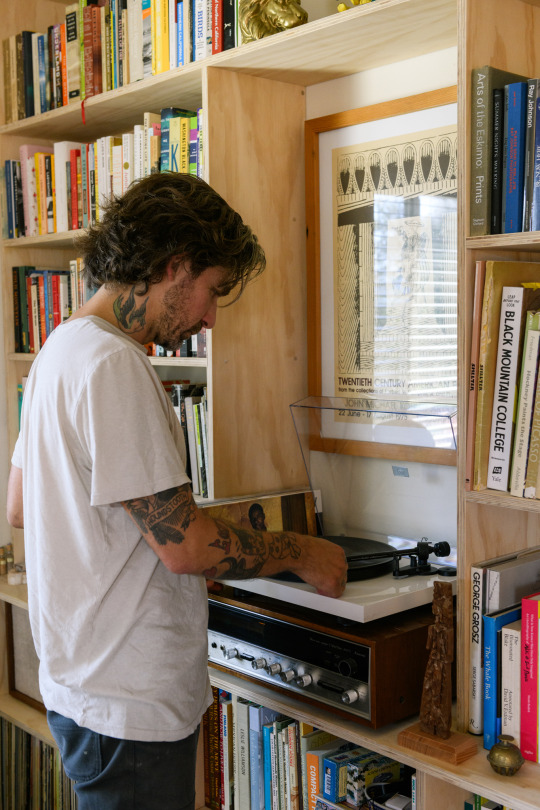



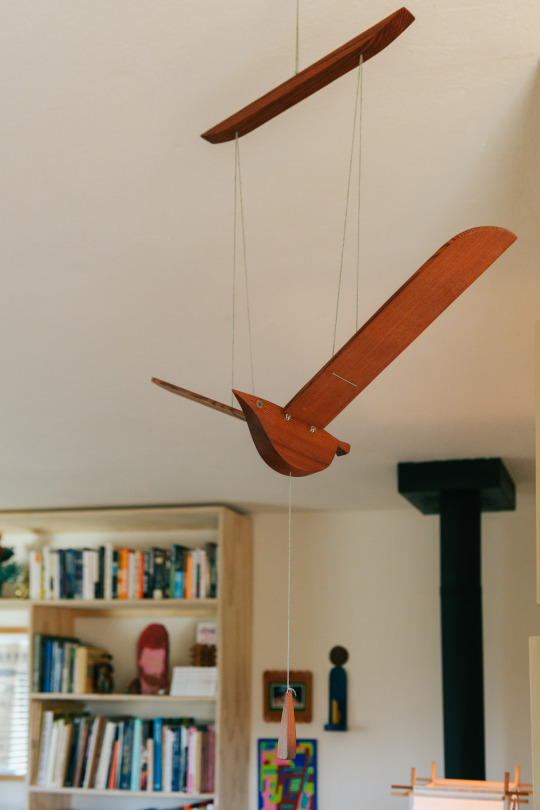

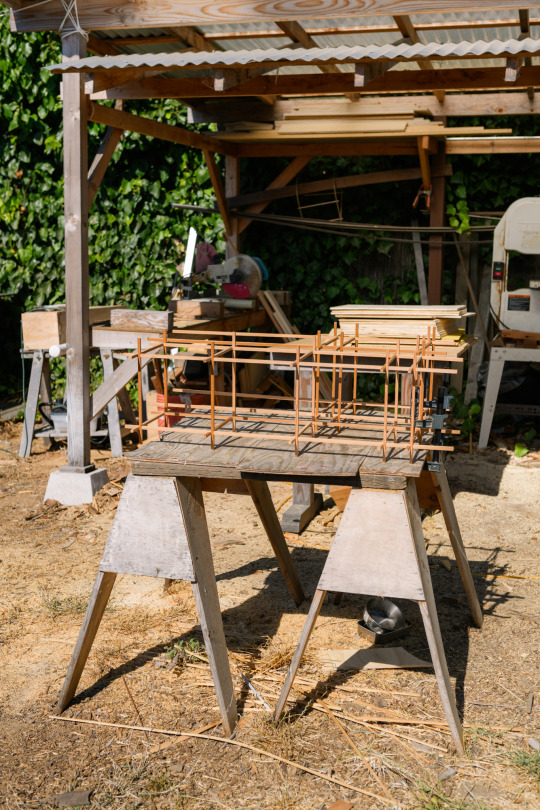

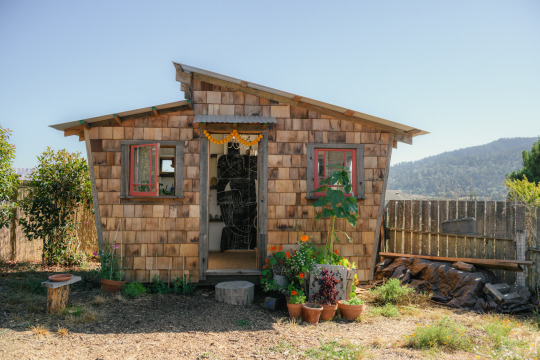
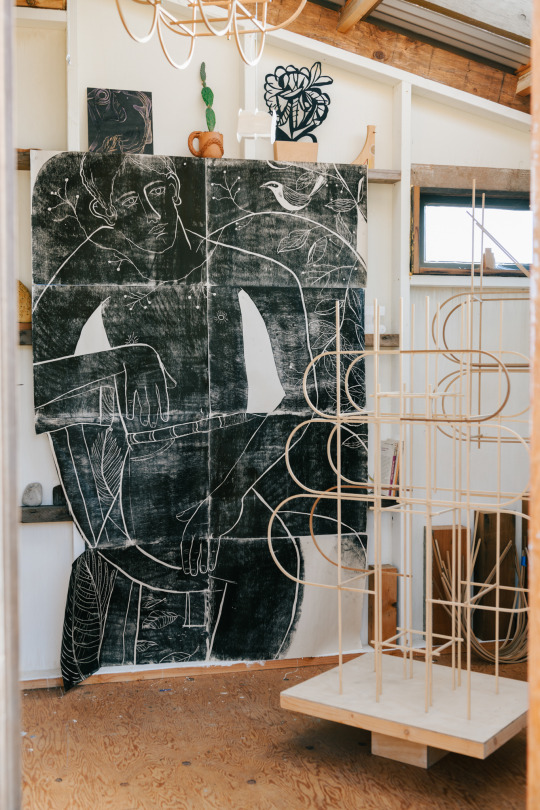
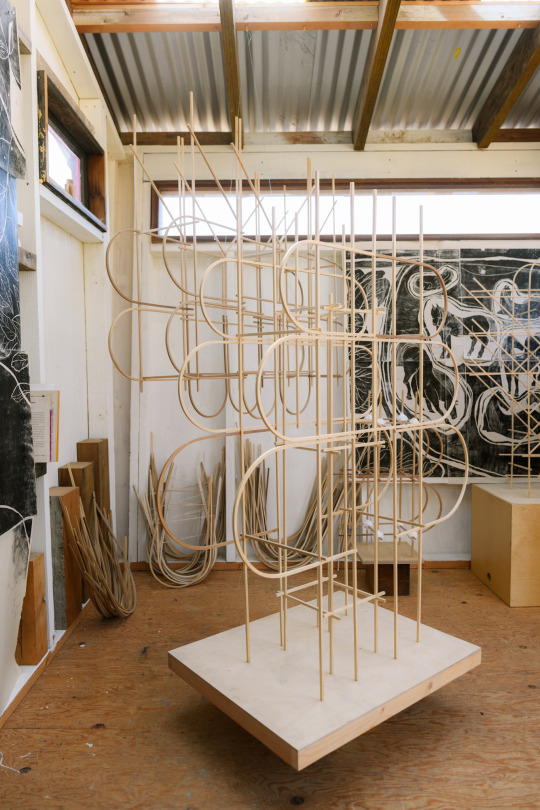
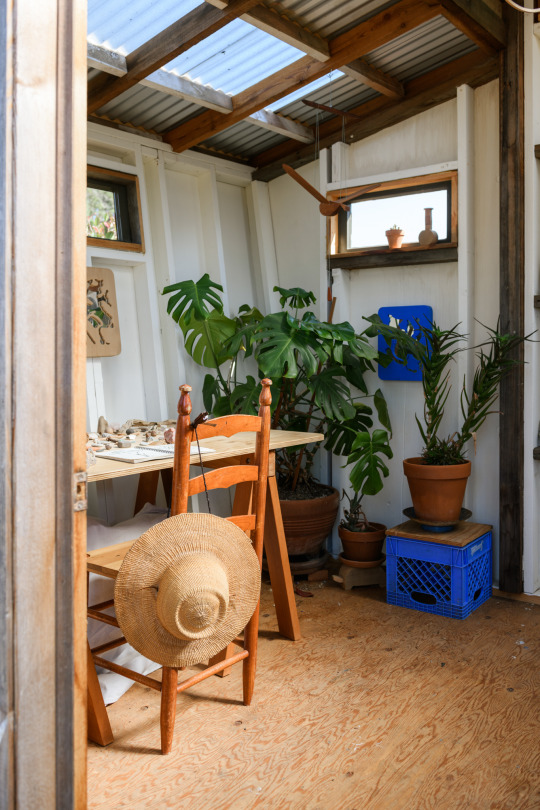

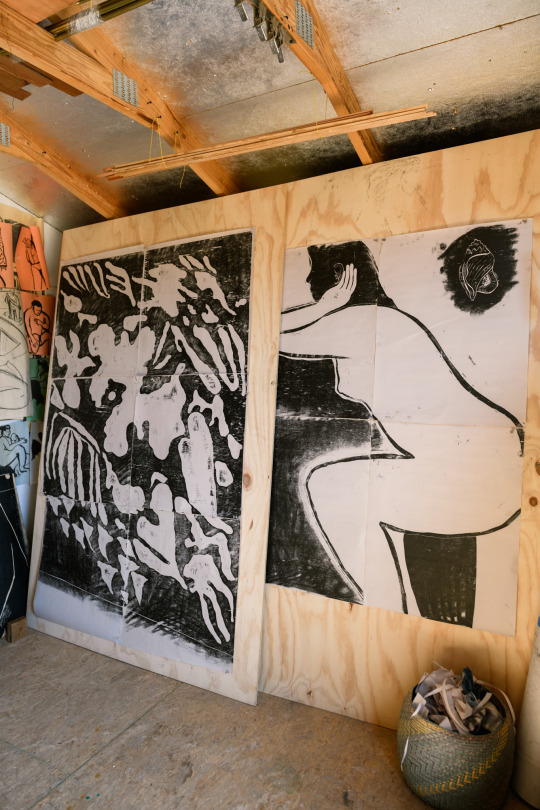

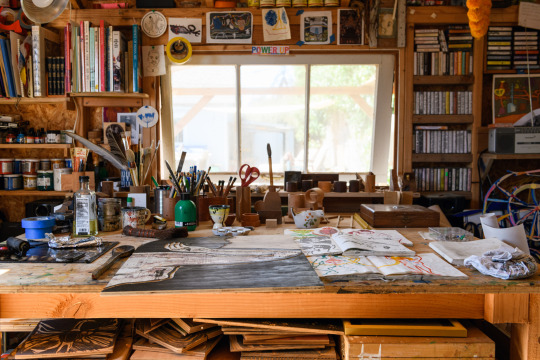

2 notes
·
View notes
Text
A Confederate Yankee from Penn Yan
By Jonathan Monfiletto
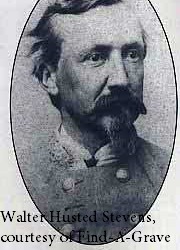
Of the 2,000 or so people from Yates County who served in the military during the Civil War, we can safely assume almost all of them fought for the Union. However, we cannot assume that for all of the men from Yates County who joined the war; Yates County is home to at least one Confederate Army general, and there may have been other soldiers from Yates County who went to the side of the South.
Walter Husted Stevens was born in Penn Yan on August 24, 1827, the son of Samuel Stevens. Presumably, Walter spent his boyhood years in and around Yates County. According to a response from late Yates County Historian Frank Swann to an inquirer about the Stevens family, Samuel served as Milo town supervisor in 1836 and justice of the peace in 1839. An 1861 newspaper article states Samuel “was a prominent citizen, and held important offices” and indicates he once served as county clerk.
Perhaps it was Samuel’s prestige in the community that laid a path for Walter toward his own prestige. Walter received an appointment to the United States Military Academy at West Point and entered as a cadet in 1844. He graduated fourth in his class in 1848 and then commissioned in the corps of engineers. As a second lieutenant, he joined the Army Corps of Engineers and spent the next 13 years on assignments in Louisiana and Texas. He constructed harbors, bridges, and fortifications along the coast in those two states, particularly at Galveston and New Orleans. He also acted as lighthouse inspector for four years.
From 1854 to 1860, according to a 2008 article in The Chronicle-Express, Stevens was superintending engineer of the construction and repair of fortifications below New Orleans. In 1855, according to Dictionary of American Biography, Stevens was promoted to first lieutenant. During this period, he married the sister of Confederate General Louis Hebert in New Orleans, cementing his sentiments with the South and its cause.
Indeed, when Texas seceded from the Union, Stevens subsequently submitted his resignation from the Union Army on March 2, 1861. Being an engineer, goes an article titled “Emigrant Revolutionaries,” Stevens did things by the book and sent his official resignation to Washington, D.C. The government, however, refused to act on the letter, though, and Stevens was eventually discharged for being absent without leave. The Dictionary of American Biography states the Army dismissed Stevens on May 2, 1861 for failure to render his accounts. Either way, the one-time bridge builder had now burned a bridge, and his Army career – at least for the United States – was over.
Instead – perhaps even without waiting for his resignation to become official – Stevens became a captain and engineer officer for the Confederate Army, his service counted toward Texas. He served first under General Pierre Beauregard during the Confederate victory at the First Battle of Bull Run and continued throughout the Union Army’s Peninsular Campaign against Virginia. Then, General J.E. Johnston promoted Stevens to major and assigned him as chief engineer of the Army of Northern Virginia. Serving under General Robert E. Lee after Johnston was wounded at Seven Pines, Stevens – then a colonel – became the chief engineer in charge of the defenses of Richmond, the Confederate capital. By August 1864, Stevens was appointed brigadier general – one of 425 general officers in the Confederate Army. He seemed to be making a name for himself in the South.
But his name was not forgotten by the people back home in Yates County. The March 14, 1861 edition of the Yates County Chronicle notes Stevens – described as the engineer in charge of lighthouses in Texas – had resigned his commission to enter the service of the Confederate Army. A year later, on March 6, 1862, the Chronicle was less matter-of-fact in its report on Stevens: “Penn Yan labors under the disgrace of rearing two rebels, now fighting against the flag of their country. … Walter Stevens, educated at the public expense at West Point, is still in the traitor army.” This report seems to take a dig at Stevens, noting he might still be in the army “if not drummed out for stealing,” though – and this line confuses me – this is “not likely, as they think much of Floyd down there.”
The 1862 report also mentions Stanley M. Warner Nevins, an apparent Penn Yan native who had also joined the Confederate Army. According to the report, Nevins had been taken prisoner at Fort Donelson in Tennessee, when the Union Army under General Ulysses S. Grant captured the Confederate stronghold in February 1862. How many other men from Yates County served during the Civil War but actually joined the Confederate side? The “Emigrant Revolutionaries” article describes a Walter Wolcott Jr., who served as a lieutenant of the Virginia Volunteer Southrons and died in Longstreet’s charge at Gettysburg. This Wolcott was born in Starkey, according to the article, though his connection, if any, to the famed Penn Yan historian Walter Wolcott is unclear to me.
According to historian Wolcott’s book The Military History of Yates County, New York, three other men served in the Confederate military: David E. Dewey, who was drafted into Confederate service but later served in the Union Army; James A. Henderson, who performed railroad service under military authority; and Hopestill R. Phillips, a lieutenant with Co. K of the 10th Virginia Calvary who was captured at Gettysburg and held on Johnson’s Island until the end of the war.
Stevens spent almost two years fortifying Richmond, but the capital city fell to the Union Army on April 2, 1865. Stevens was the last uniformed Confederate soldier to abandon the city, and then he surrendered with the army at Appomattox a week later. In fact, Stevens literally burned a bridge on his way out of Richmond – setting fire to Mayo’s Bridge to slow the Union advance but then reportedly crossing back over the flaming bridge as his troops marched across it so he could indeed be the last Confederate soldier to leave Richmond.
At the end of the war, Stevens – like other Confederate comrades – left the South and fled to Mexico. He once again flexed his engineer muscles, overseeing the construction of 200 miles of railroad between Vera Cruz and Mexico City and then becoming the superintendent of the Imperial Railroad. His work there didn’t last long, however, as he died of yellow fever in November 1867, just 40 years old.
To this day, Stevens remains in the South; he is buried in Hollywood Cemetery in Richmond – along with Confederate Generals J.E.B. Stuart and George Pickett, 18,000 Confederate soldiers, and even U.S. Presidents James Monroe and John Tyler. Whether Stevens ever returned to his hometown is unclear, as is how his hometown’s opinion and sentiment of him changed over time.
However, his wife – named only as “the widow of Walter Stevens, formerly of Penn Yan” – was the guest of Helen M.T. Ayres, according to the Chronicle of October 16, 1879. Mrs. Stevens was the librarian of the Agricultural Department in Washington, D.C. Whatever Penn Yan and Yates County felt about their prodigal son – who left the North to fight for the South – at least someone felt his wife was welcome in his hometown.
#historyblog#history#archives#museum#american history#us history#local history#newyork#yatescounty#pennyan#civilwar#confederate
5 notes
·
View notes
Text
The Future of Home Building in Central Virginia
Build your dream home with expert new home builders in Central Virginia! They design and create custom homes that match your style and needs. With quality materials and skilled craftsmanship, they make the process simple and stress-free. Start building your perfect home today!
0 notes
Text
0 notes
Text
Exploring New Construction and Window Tinting in Hampton, VA: A Homeowner’s Guide

Introduction
Hampton, Virginia, is a city rich in history and brimming with opportunities for new construction. As the demand for residential and commercial spaces grows, homeowners and builders alike are discovering the benefits of modern construction practices and enhancements like window tinting. This article will explore the current landscape of new construction in Hampton, the advantages of window tinting, and how to find the best general contractors for your project.
The New Construction Boom in Hampton, VA
With its strategic location and vibrant community, Hampton is becoming a popular choice for new homebuyers and developers. The city offers a mix of traditional and contemporary architectural styles, catering to diverse preferences.
Essential Steps for New Construction
Finding the Right Lot: The first step in any new construction project is selecting a suitable lot. Consider factors such as neighborhood safety, proximity to schools and amenities, and future development plans in the area.
Planning and Design: Collaborating with architects and designers is crucial to create a space that meets your needs. Focus on floor plans, energy efficiency, and integrating outdoor spaces to enhance your home’s appeal.
Permitting Process: Navigating the permitting process can be complex. Make sure to understand local regulations and work closely with your contractor to ensure all necessary permits are secured before construction begins.
Choosing General Contractors in Hampton
General contractors are vital to the success of any new construction project. They manage the construction process, coordinate with subcontractors, and ensure that the project stays on schedule and within budget.
Tips for Selecting the Right General Contractor
Experience and Specialization: Look for contractors who have a proven track record in residential or commercial construction, depending on your project type. Experience in the Hampton area can provide insights into local building codes and requirements.
Check References: Don’t hesitate to ask for references and review past projects. Speaking with previous clients can give you a better understanding of the contractor’s work ethic, reliability, and quality of workmanship.
Transparent Communication: Choose a contractor who communicates clearly and regularly. Good communication helps to address any concerns and ensures that you are informed throughout the construction process.
The Advantages of Window Tinting
Incorporating window tinting into your new construction or existing home can provide a range of benefits, making it a wise investment for homeowners in Hampton.
Benefits of Window Tinting
Energy Efficiency: Window tinting helps regulate indoor temperatures by reflecting heat away from your home. This can lead to significant savings on heating and cooling costs, especially during Hampton’s hot summers.
Protection from UV Damage: Tinted windows block harmful ultraviolet rays, reducing the risk of skin damage and protecting your furnishings from fading over time.
Enhanced Aesthetics: window tinting hampton va can improve the overall appearance of your home, giving it a sleek, modern look. It can also add a cohesive design element when combined with architectural features.
Increased Privacy and Security: Tinted windows provide added privacy without sacrificing natural light. Additionally, window films can strengthen glass, making it more resistant to breakage.
Conclusion
As Hampton, VA, continues to develop, homeowners have an array of options for new construction and enhancements. Working with skilled general contractors ensures that your project is executed efficiently and adheres to local standards. Additionally, investing in window tinting can provide energy savings, UV protection, and increased privacy. By understanding these key elements, homeowners can create beautiful, functional, and sustainable spaces that enhance their quality of life in Hampton. Whether embarking on a new build or upgrading an existing property, these insights will help you navigate the process with confidence.
0 notes
Link
0 notes
Text
Sustainable Living in Ashburn, Virginia: Green Initiatives and Eco-Friendly Spots.
Ashburn, Virginia, nestled in the heart of Loudoun County, is more than just a tech hub; it's a community increasingly focused on sustainability and eco-friendly living. With the rising awareness of environmental issues, Ashburn has embraced various green initiatives and developed numerous eco-friendly spots, making it a model for sustainable living in the region of Ashburn, Virginia.
Green Initiatives
1. Renewable Energy Projects
Ashburn has been at the forefront of renewable energy adoption. One notable initiative is the collaboration between Loudoun County and Dominion Energy to expand solar power installations. Several commercial and residential properties in Ashburn now feature solar panels, significantly reducing the carbon footprint of the community. Dominion Energy's Green Power program also allows residents to purchase renewable energy credits, supporting the development of additional renewable energy projects.
2. Recycling and Waste Management
Loudoun County's recycling programs have been instrumental in promoting sustainability in Ashburn. The county offers single-stream recycling, making it easier for residents to recycle paper, plastics, and metals. Additionally, the county runs hazardous waste collection events to ensure proper disposal of items like batteries, paint, and electronics, preventing them from ending up in landfills.
Eco-Friendly Spots
1. Brambleton Regional Park and Golf Course
Brambleton Regional Park and Golf Course is a prime example of eco-friendly recreational spaces in Ashburn. The park integrates sustainable landscaping practices, such as the use of native plants that require less water and maintenance. The golf course has implemented an environmentally friendly irrigation system that conserves water, and its maintenance practices prioritize the use of organic fertilizers and pest control methods.
2. W&OD Trail
The Washington & Old Dominion (W&OD) Trail is a beloved feature in Ashburn, offering a green escape for cyclists, runners, and walkers. Spanning 45 miles from Shirlington to Purcellville, the trail encourages outdoor activities and reduces reliance on motor vehicles. The trail is also home to several conservation areas and educational signage about local wildlife and ecosystems, promoting environmental awareness among its users.
3. Farmers Markets
Ashburn is home to several farmers markets that emphasize locally grown, organic produce. The Ashburn Farmers Market, for instance, operates year-round, providing residents with access to fresh, sustainably farmed fruits, vegetables, and artisanal goods. Supporting these markets not only reduces the carbon footprint associated with transporting food but also fosters a sense of community and supports local farmers.
Sustainable Living Practices
1. Green Building and Housing
Many new developments in Ashburn prioritize green building practices. Builders are increasingly adopting LEED (Leadership in Energy and Environmental Design) standards, which ensure energy-efficient homes with reduced water usage and improved indoor air quality. Homeowners are also encouraged to incorporate energy-efficient appliances and smart home systems to further reduce their environmental impact.
2. Community Gardens
Community gardens have become popular in Ashburn, providing residents with the opportunity to grow their own food sustainably. These gardens promote the use of organic farming practices and reduce the need for transportation and packaging associated with store-bought produce. The Ashburn Village Community Garden is one such initiative, where residents can rent plots and engage in sustainable gardening while fostering community bonds.
Educational Initiatives
Educational programs play a crucial role in Ashburn's sustainability efforts. Local schools and community centers offer workshops and seminars on topics such as composting, water conservation, and renewable energy. These programs aim to empower residents with the knowledge and skills needed to make environmentally conscious decisions in their daily lives.
Conclusion
Ashburn, Virginia, exemplifies how a community can effectively integrate sustainability into its fabric. Through a combination of green initiatives, eco-friendly spots, and educational programs, Ashburn is paving the way for a greener future. As more residents embrace these practices, Ashburn's commitment to the environment will continue to grow, setting a standard for sustainable living in the region. Whether you're visiting or residing in Ashburn, the opportunities to engage in and support eco-friendly living are plentiful, ensuring a healthier planet for future generations.
0 notes
Text

Explore the Different Styles of Metal Roofing for Your Pittsburgh Home!
Are you considering a new roof for your home? Metal roofing might be the perfect solution! Here in Pittsburgh, metal roofs are becoming increasingly popular due to their durability, energy efficiency, and sleek modern look.. But did you know there are different styles to choose from? Brock Residential Metal Roofing has listed two popular options:
Standing Seam Metal Roofs: Known for their clean, low profile look, standing seam metal roofs feature raised seams that run vertically down the roof. They offer excellent weather resistance and with concealed fasteners, these roofs offer enhanced protection against leaks and wear, ensuring your home stays safe and secure for decades.are perfect for contemporary homes.
Exposed Fastener Roof Systems:These roofs are typically more affordable than standing seam options, making them a great choice for homeowners on a budget. The panels are attached directly to the roof deck and are secured with exposed fasteners, making installation faster and more straightforward.
Exposed fastener systems are available in various profiles and colors, allowing you to customize the look to match your home’s style. They provide excellent performance and are perfect for residential homes.
Each style offers unique benefits and can significantly enhance the curb appeal of your home. Both options come in a wide variety of colors to complement any home's style. Plus, with Pittsburgh's varied weather, metal roofing provides exceptional protection against heavy snow, rain, and strong winds. Metal roofs can also help you save on energy costs in the long run! They reflect sunlight, which can help keep your home cooler in the summer.
Not sure which style is right for you? Consider factors like your budget, desired look, and roof pitch. A qualified metal roofing contractor in Pittsburgh like Brock Residential Metal Roofing can help you weigh the pros and cons of each option and choose the best fit for your home.
Ready to transform your home with a new metal roof? Contact Brock Residential Metal Roofing today at 412-919-0697 for a free consultation and see how we can help you choose the best style for your needs!
#PittsburghHomes #MetalRoofing #HomeImprovement #RoofingStyles #StandingSeam #ExposedFasternerRoof #RoofingExperts #BrockResidentialMetalRoofing
0 notes
Text
Superior Construction Services

Website: https://buildwithsuperior.com/
Address: 2201 Wisconsin Ave NW #200, Washington, DC 20007, United States
Phone: 202-465-4330
Superior Construction Services is a high-end remodeler and a luxury custom home builder offering licensed full-service, award-winning residential remodeling, and high-end new construction in The District of Columbia, Maryland, Virginia, and North Carolina. Superior is a recognized, trusted, and reputable high-end remodeler and luxury custom home builder with over 30 years of experience in The District of Columbia, Maryland, and Virginia.
Business Mail: [email protected]
Hours: Mon-Fri: 8AM – 5PM Sat-Sun: Closed
Facebook: https://www.facebook.com/buildwithsuperior
Twitter: https://twitter.com/buildsuperiordc
Instagram: https://www.instagram.com/buildwithsuperiordc/
GoogleMyBusiness: https://maps.app.goo.gl/QyQz4gWUVDZqohXS8
LinkedIn: https://www.linkedin.com/company/buildwithsuperior/
Founded: 1989
Owner Name: Daniel Steinkoler
Keyword:
Custom home builder
Remodeller
Home builder
Kitchen Renovator
Bathroom Renovator
General Contractor
Housing Development
Construction Company
Interior construction contractor
0 notes
Text

Top Custom Home Builder in Virginia: Your Dream Home Awaits
Crafting your dream home in Virginia is now within reach. Our custom home builders in Virginia offer personalized design, expert craftsmanship, and exceptional service to bring your vision to life. We make sure, from our initial building consultations throughout the entire building process and until we hand you the keys to your new home, that you are completely satisfied with your home. Contact us today to turn your dream home into a reality.
0 notes
Text

Landscape Design Services
Grosh’s Lawn Services is your go-to partner for creating remarkable outdoor spaces! With 34 years of expertise in landscape design and renovation, they can turn your commercial or residential landscape into a captivating display of natural beauty.
Here’s what they offer:
Landscape Renovation for Established Spaces: For existing residential and commercial landscapes, Grosh’s Lawn Services provides landscape renovation.
This includes: Shrub and Tree Removal: Clearing out old trees and shrubs. Stump Grinding: Getting rid of stumps. Refreshing Landscape Elements: Removing outdated features like stone, mulch, fabric, and bed edging. Starting Fresh: With a clean slate, you can select new trees, flowers, and shrubs that will thrive together. Finishing Touches: Bed edging and mulching to enhance the landscape.
Avoid the “Builders Landscape”: When building a new home, Grosh’s Lawn Services ensures you don’t end up with a generic “builders landscape.” What’s a builders landscape? It’s where no thought is given to sidewalk placement or landscape bed size.
Grosh’s Lawn Service considers: Sidewalk Design: Adding flair and considering landscape bed size. Quality Topsoil: Ensuring proper soil quality for plant health. Plant Placement: Avoiding overgrown shrubs and ensuring adequate natural moisture. Variety and Color: Life is about variety—let’s design landscapes that stand out!
Service Areas: Grosh’s Lawn Services serves various locations, including: Falling Waters, West Virginia Greencastle, Pennsylvania Hagerstown, Maryland Hancock, Maryland Keedysville, Maryland Sharpsburg, Maryland Smithsburg, Maryland Williamsport, Maryland Clear Spring, Maryland Needmore, Pennsylvania Berkeley Springs, West Virginia Myersville, Maryland
Ready to transform your outdoor space? Contact Karen and Tom at Grosh’s Lawn Services and explore their landscape design webpage for inspiration! 🌿🌼🏡 #groshslawnservice
1 note
·
View note
Text
Advantages of LEED-Certified Structures
As an LEED Consultancy, "Leadership in Energy and Environmental Design" is an acronym that can be reduced to "LEED." The LEED certification program assesses how well-designed and built buildings are about the environment, considering things like making material selection, responsible land use, energy efficiency, water usage, air quality, and accessibility to public transit. These factors are considered in the process of evaluation. Currently, the most well-known example of its kind worldwide is the LEED certification program. Obtaining LEED certification is proof that environmentally responsible building practices have been used. This can have a significant positive impact on the reputation of the building owner and the contractor that creates LEED-certified buildings.

Being an LEED Consultant, Buildings with a track record of completing LEED-certified structures can help builders establish a name for themselves as leaders in the construction industry. LEED certification may offer considerable financial and other rewards besides its PR benefits. As per the United States Green Building Council (USGBC), LEED-certified buildings have the advantage of having quicker lease-up rates and might be eligible for various perks, such as tax refunds and zoning exemptions. A rise in commercial construction enterprises operating in the industry is also encouraged by their continued maintenance of higher-than-average property values. Residential building businesses may benefit from LEED accreditation since it can increase the speed and price at which homes sell.
We are an LEED Consultancy, the builder of a house constructed in compliance with LEED criteria can be qualified for tax breaks. This is done so that the two kinds of residences in the same neighbourhood can be compared. Based on available data, a construction company can maintain profitability and productivity even during poor economic growth by using LEED. A LEED certification has advantages for the bottom line, the environment, and public health. These advantages include tax rebates, tenant recruitment, operating cost savings, lower energy use and carbon emissions, and achieving environmental, social, and governance (ESG) goals. These benefits are shown in the following chart.
One of the financial advantages of earning LEED certification is that it entitles a building to specific tax credits. Several states, including Maryland, New Mexico, New York, and Virginia, have implemented LEED (Leadership in Energy and Environmental Design) incentive programs to recognize and honour structures and communities that strive to live more sustainably. Find out more about the green incentives offered in your state by visiting the Database of State Incentives for Renewables & Efficiency (DSIRE). Another financial advantage of being LEED-certified is the building's ability to attract new tenants. One of the main objectives is to design a building that offers a healthy environment for all individuals who work, reside in, or visit the facility to obtain LEED certification.
As an expert LEED Consultant, A LEED certification has several health benefits, including improved indoor air quality. Buildings with the LEED certification have more natural light, improved air quality, and no potentially harmful chemicals in some paints and finishes. An improvement in the indoor air quality of your building may be especially beneficial to those who often come and have health issues like stress, depression, respiratory allergies, or asthma. Installing energy-efficient lights and appliances, more efficient waste management systems, water-saving faucets and toilets, solar or wind energy systems, air scrubbers, and other parts that can help reduce your building's overall carbon footprint should be your first step. Once the required modifications are made, you can apply online to become a LEED-certified professional.
0 notes
Text
Virginia Beach general contractor

Tips to Find Home Remodeling Virginia Beach
Finding a reliable home remodeling service in Virginia Beach or any other location involves several steps. Here are some tips to help you find the right home remodeling service in Virginia Beach:
Research and Recommendations: Start by asking friends, family, and neighbors for recommendations. Word-of-mouth referrals are often the most reliable way to find a reputable remodeling service. You can also search online for local reviews and ratings.
Check for Licensing and Insurance: Ensure that the remodeling service is licensed to operate in Virginia Beach and carries the necessary insurance. This helps protect you in case of any accidents or issues during the project.
Ask for References: Request references from the remodeling service and contact past clients to inquire about their experiences. A reputable company should be able to provide you with a list of satisfied customers.
Portfolio and Experience: Review the company's portfolio of previous projects. This will give you an idea of their style, capabilities, and the quality of their work. Consider working with a company that has experience in the type of remodeling you need. Virginia Beach Renovation
Get Multiple Quotes: Obtain quotes from multiple remodeling services. This will give you a better understanding of the pricing in the area and help you choose a service that offers value for your money.
Interview Potential Contractors: Meet with the contractors to discuss your project. This is an opportunity to gauge their professionalism, communication skills, and how well they understand your vision. Ask questions about the timeline, budget, and any concerns you may have.
Check for Permits and Compliance: Ensure that the remodeling service is aware of and complies with local building codes and permit requirements in Virginia Beach. Failure to do so can lead to issues down the road.
Written Contract: Always have a written contract in place that clearly outlines the scope of work, project timeline, payment schedule, and any warranties or guarantees. Read the contract thoroughly before signing it.
Visit Ongoing Projects: If possible, visit some of the company's ongoing projects to see the quality of work and how well they manage their job sites.
Communication: Effective communication is crucial. Choose a remodeling service that is responsive and maintains open lines of communication throughout the project.
Quality Materials and Products: Ensure that the remodeling service uses high-quality materials and products. Cheaper options may lead to problems in the long run.
Payment Schedule: Be cautious about upfront payments. A reputable remodeling service should have a fair and reasonable payment schedule tied to project milestones.
Warranties and Guarantees: Inquire about any warranties or guarantees provided by the remodeling service. This can provide peace of mind in case any issues arise after the project is completed.
Remember that choosing the right home remodeling service is a significant decision, and it's important to take your time and do your due diligence to find a company that aligns with your needs and expectations.
TOP VIRGINIA BEACH HOME REMODELING CONTRACTORS BY WILLIAM ANNA CONSTRUCTION
Looking for the most exquisite, high-end home remodeling contractors in Virginia Beach, or wanting to find the best home builder in Virginia Beach and the surrounding area? We know the prospect of undertaking a whole home remodeling project. At William Anna Construction, we turn the “Ordinary into the Extraordinary” With our full service contracting experts, we can make your open floor plan, living room renovation in Newport News, kitchen remodel in Chesapeake, or a bathroom renovation in Williamsburg, a complete oasis. We understand that these types of projects can be intimidating.
Over 30+ Years General Contracting Serving the Local Virginia Beach Communities
Rest assured, the remodeling, renovation, room additions and full service general contracting professionals offered to you have over 30 year experience and will guide you every step of the way. Learn More
Complete New Home Construction Professionals
New Home Construction Contractor in Virginia Beach New Home Construction Contractor in Virginia Beach by William Anna Construction Looking for a professional, full-service New Home Remodeling Contractor in Virgina Beach, VA? Are you living in the Virginia Beach area and are trying to decide which General Contractor to hire?
We invite you to explore our services. One of our goals is too educate anyone looking for a Chesapeake kitchen remodeler, bathroom renovation in Williamsburg, or home remodeling contractor in Hampton Roads or surrounding area? You can feel relieved that your search for a complete general contractor is over.
References
Home improvement https://en.wikipedia.org/wiki/Home_improvement
0 notes
Text
New Construction and Window Tinting in Hampton, VA: Key Insights for Homeowners
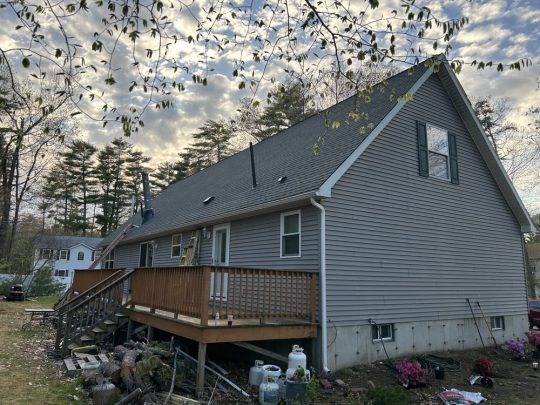
Introduction
Hampton, Virginia, is a city rich in history and brimming with opportunities for new construction. As the demand for residential and commercial spaces grows, homeowners and builders alike are discovering the benefits of modern construction practices and enhancements like window tinting. This article will explore the current landscape of new construction in Hampton, the advantages of window tinting, and how to find the best general contractors for your project.
The New Construction Boom in Hampton, VA
With its strategic location and vibrant community, Hampton is becoming a popular choice for new homebuyers and developers. The city offers a mix of traditional and contemporary architectural styles, catering to diverse preferences.
Essential Steps for New Construction
Finding the Right Lot: The first step in any new construction project is selecting a suitable lot. Consider factors such as neighborhood safety, proximity to schools and amenities, and future development plans in the area.
Planning and Design: Collaborating with architects and designers is crucial to create a space that meets your needs. Focus on floor plans, energy efficiency, and integrating outdoor spaces to enhance your home’s appeal.
Permitting Process: Navigating the permitting process can be complex. Make sure to understand local regulations and work closely with your contractor to ensure all necessary permits are secured before construction begins.
Choosing General Contractors in Hampton
General contractors are vital to the success of any new construction project. They manage the construction process, coordinate with subcontractors, and ensure that the project stays on schedule and within budget.
Tips for Selecting the Right General Contractor
Experience and Specialization: Look for contractors who have a proven track record in residential or commercial construction, depending on your project type. Experience in the hampton general contractors area can provide insights into local building codes and requirements.
Check References: Don’t hesitate to ask for references and review past projects. Speaking with previous clients can give you a better understanding of the contractor’s work ethic, reliability, and quality of workmanship.
Transparent Communication: Choose a contractor who communicates clearly and regularly. Good communication helps to address any concerns and ensures that you are informed throughout the construction process.
The Advantages of Window Tinting
Incorporating window tinting into your new construction or existing home can provide a range of benefits, making it a wise investment for homeowners in Hampton.
Benefits of Window Tinting
Energy Efficiency: Window tinting helps regulate indoor temperatures by reflecting heat away from your home. This can lead to significant savings on heating and cooling costs, especially during Hampton’s hot summers.
Protection from UV Damage: Tinted windows block harmful ultraviolet rays, reducing the risk of skin damage and protecting your furnishings from fading over time.
Enhanced Aesthetics: Window tinting can improve the overall appearance of your home, giving it a sleek, modern look. It can also add a cohesive design element when combined with architectural features.
Increased Privacy and Security: Tinted windows provide added privacy without sacrificing natural light. Additionally, window films can strengthen glass, making it more resistant to breakage.
Conclusion
As Hampton, VA, continues to develop, homeowners have an array of options for new construction and enhancements. Working with skilled general contractors ensures that your project is executed efficiently and adheres to local standards. Additionally, investing in window tinting can provide energy savings, UV protection, and increased privacy. By understanding these key elements, homeowners can create beautiful, functional, and sustainable spaces that enhance their quality of life in Hampton. Whether embarking on a new build or upgrading an existing property, these insights will help you navigate the process with confidence.
0 notes
Text
Building Martinsburg with Triple Crown Construction

🏚️ Need to clear the slate? Our Demolition Services in Martinsburg have got you covered! Whether it's a small teardown or a major overhaul, we make way for your fresh start.
⚠️ Asbestos lurking? Safety first! Trust our Asbestos Removal in Martinsburg to ensure a clean and hazard-free environment. Breathe easy as we eliminate the risks.
🏡 Dreaming of a new home? Our Custom Home Builders in Martinsburg bring your vision to life, brick by brick. From design to finishing touches, we craft your dream dwelling.
🏗️ Expanding your horizons? Our Basement Remodeling in Martinsburg transforms underutilized spaces into functional gems. From man caves to home offices, we've got your renovation needs covered.
🏢 Building Martinsburg isn't just our name; it's our mission! Whether it's tearing down, clearing out, or constructing anew, we're here to build your future.
Triple Crown Construction in West Virginia – Your Partner in Building Martinsburg! 🛠️
0 notes